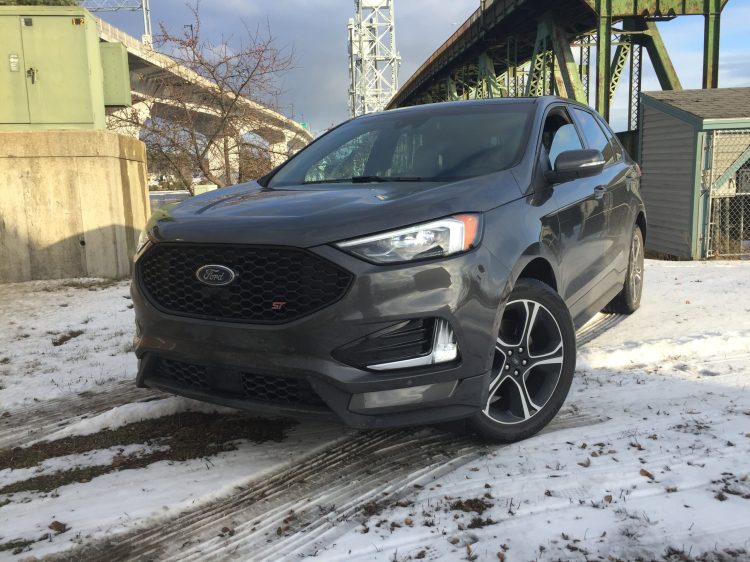The changes afoot in the world’s auto-industry are capsulated by the headlines in front of us every day. “Small SUV’s Surge as Drivers Ditch Sedans,” “Farewell to the Family Sedan,” “EV’s Assault the Market,” “Climate Change Mandates Carbon Taxes.” If you were sitting in the captain’s chair at any of today’s automakers, how do you make the correct decisions that will impact not only your products, but perhaps your very future?
Some recent comments by Ford’s CEO Jim Hackett highlight the turmoil that exists in Dearborn and every other automaker’s headquarters. Hackett anticipates that the upcoming Mach-E Mustang electric car will position the brand to take advantage of whatever EV market exists, even as F-series pickup sales continue to surge and supply the company’s operating margin as the Focus, Fusion and Fiesta fade from dealers’ lots.
While buyers must navigate the onslaught of technology, much of which is not being used, they are also confronted by the ever escalating price of new vehicles—one of the largest con’s against the current crop of EV’s.
Hackett even outlined a plan at Ford to start the de-contenting of future designs, pulling out the features and components that buyers are not using. Remember, your car is now a rolling computer, compiling mountains of data on you, how your drive, what your vehicle does, where it goes, etc. While both good and bad (anyone got privacy concerns?), the effort to recognize and control cost is necessary, especially as overall sales are facing this price headwind.
Yet, this piece is supposed to be about the Edge ST, Ford’s Performance SUV model. The segue into the Mach-E however is warranted.
Both of these mid-size crossovers will be about the same size; 189-inches long for the Edge, three inches less for the Mach-E. The Mustang-faced Mach-E uses a 117-inch wheelbase—with a giant battery pack in the middle—while the Edge rides on a 112-inch chassis. The Edge is two inches wider and a whopping five inches taller, yet both have approximately 60-cubic feet of max cargo room, optional AWD, and can deliver spirited performance, like a Mustang.
Built in Oakville, Illinois, the Edge is the second best-selling mid-size crossover, trailing only the Jeep Grand Cherokee annually. Last year, Ford sold over 134,000 Edge models and now believes that the upcoming Mach-e will compliment Edge, Escape, and Explorer sales as the brand dives headfirst into the no-sedans-to-sell end of the pool.
The ST trim ($42,355 to start, $49,430 as shown versus base FWD Edge pricing starting at $29,995) ladles on numerous technology pieces like Sync 3, WIFI ho-spot, USB ports, pre-collision braking, lane-keeping assist, rear camera w/washer, to augment the ST trim—black-out grille, LED lites, 20-inch sport wheels, dual exhaust, plus performance suspension and tuning—to create a more sharply focused crossover. Steering feel is weighted more than a conventional Edge, the suspension is notably stiffer, and pouncing on the right pedal produces a much more urgent pace as the 2.7-liter Ecoboost V-6 is extremely responsive and surprisingly quick.
Turbocharged engines have existed since 1905, yet Ford has mainstreamed the engineering philosophy of jamming more air and fuel into the engine’s combustion chamber via a boosted intake system more than most all other automakers. The principle of smaller engines aided by turbocharging to increase power, as well as efficiency, has thus far proven to be a sound business practice for Ford as buyers have embraced the technology. Ecoboost turbocharging exists on everything Ford sells—from the Mustang to the Super Duty diesel trucks.
Here, the Edge ST produces rapid acceleration with a very lineal delivery of torque—the Ford feels powerful and ready to go at any throttle setting, with the 8-speed automatic perfectly handling your pedal requests. While 335-hp isn’t that outlandish in this day and age, the output from the Ecoboost engine makes the Edge ST feel strong, willing, and sporty.
EPA ratings are 19/26/21-mpg for the ST. After 1,300 miles commuting and traveling around Maine, including several lengthy highway trips, the ST returned a solid 23-mpg for its wintry visit. The AWD system proved worthy of matching the elements of sleet, snow, and winding rural roads.
Hits; great seat heaters, efficient controls, above-average adaptive cruise performance, supportive front power seats, roomy rear seating, quiet road manners, remote starting, plus a massive dual-panel sunroof to keep the gloom of winter at bay.
Cons; the rotary shifter on the console was sometimes very slow to react to gear choices, and the Edge’s 8-inch control screen already feels small given the march to TV-sized tablets embedded in the dash of newer models. This is also a plus, as drivers are less enticed to play on the screen, thereby less distracted while driving.
Good size, great interior, driver-focused performance. A lot to like in the Edge ST.
Send questions/comments to the editors.




